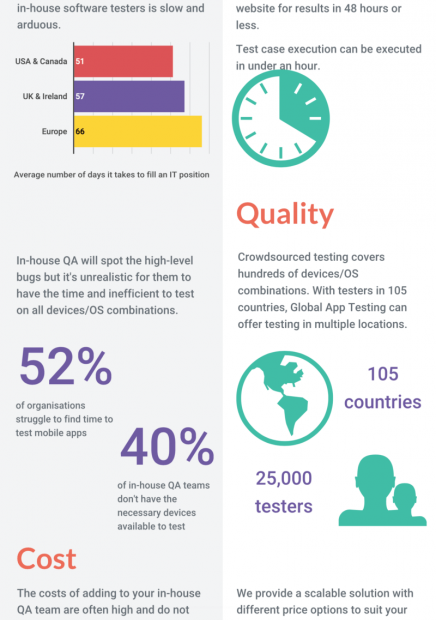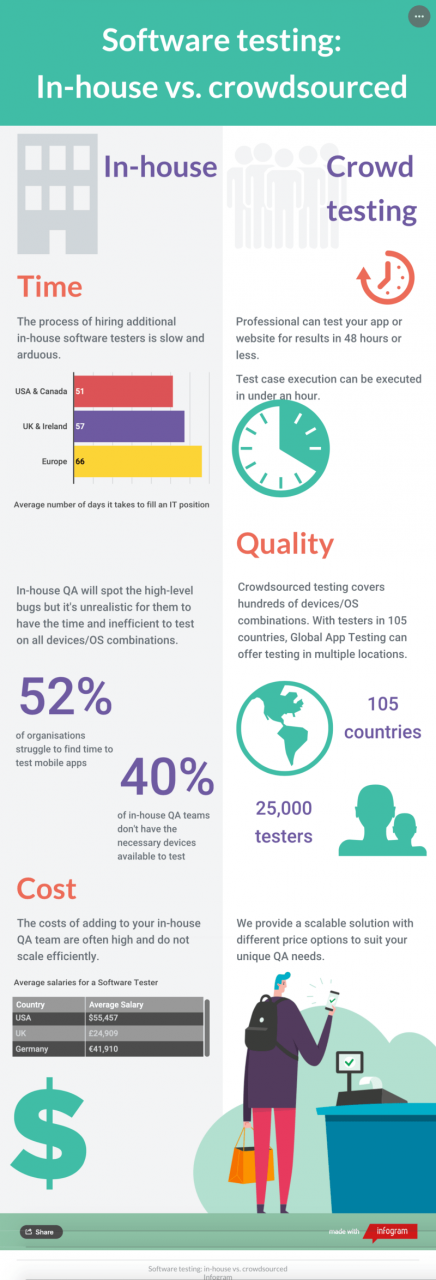Artificial intelligence adoption is accelerating, with Gartner reporting 37% of organizations leveraging AI in 2019. Even 29% of SMEs have deployed AI as of 2020. Fully transforming with AI however, remains challenging. The scarce talent pool and heavy investments required make AI a costly endeavor. Most companies, except tech giants, struggle with affordable AI implementation.
This is where crowdsourcing emerges as a viable solution. Between 2012-2017, the US crowdsourcing market alone grew 37%, reaching $6.5 billion. Although this includes diverse tasks like translations and surveys, AI crowdsourcing is gaining traction.
As machine learning contains repetitive chores like data preparation, model building and testing, organizations are leveraging crowdsourcing to slash costs and time-to-market for AI systems.
As an expert in web scraping and data extraction with over a decade of experience, I wanted to provide additional context on crowdsourcing‘s role in aggregating the high-quality data needed to train AI models:
-
Outsourcing data collection to a crowdsourced workforce provides access to an expansive, diverse talent pool. This allows the assembly of niche, high-volume datasets tailored to specific AI training needs.
-
Crowdsourcing data gathering from the internet, social media etc. facilitates aggregation of real-world raw data at scale. This data better reflects target populations and use cases.
-
Curating custom datasets via crowdsourcing grants control over critical factors like size, diversity, noise levels etc. This powers more accurate AI model training.
-
Tools like data labeling interfaces and annotation guidelines enable management of crowdsourced data collection quality. Advanced requesters can even train and test workers.
What is Crowdsourcing for AI?
Crowdsourcing refers to obtaining information, input, or work for a project from a large group of people via the internet.
Crowdsourced labor can be paid or voluntary depending on the use case. In AI, it mostly involves paid services.
Key Use Cases of Crowdsourcing in AI
AI systems require specific components to function effectively:
- Clean, labeled training data
- Data science work for model building
- Testing to ensure correct functioning
Data Labeling
Data powers AI algorithms. With more real-world data, ML accuracy improves. But collecting sufficient data for training is challenging.
On average, mid-complexity ML problems need 10,000–100,000 data points. Highly complex ones demand 100,000–1 million points. Handling such volumes in-house is expensive and slow.
Crowdsourcing data labeling allows businesses to train ML models cost-effectively. We have a detailed data labeling guide examining workflow options and tradeoffs.
To demonstrate crowdsourcing‘s advantages in assembling training data, here are some statistics:
-
Crowdsourced labeling can reduce data preparation costs by 50-70% (Source)
-
Top performers can label over 10,000 images daily with accuracy exceeding 95% (Source)
-
Crowdsourcing provides access to subject matter experts like doctors who can label niche medical imaging datasets
Algorithm Design
Acquiring top AI talent is difficult and expensive. Per GlobeNewswire, 59% cite a shortage of data science skills as a top AI adoption barrier. The average data scientist salary is $120k in the US.
Toptal freelancers cost $60–$210 per hour, equaling $100k–$350k annually, excluding discounts.
For algorithm design, businesses can use data science competitions. These platforms let companies crowdsource solutions by defining a problem and providing data. Scientists worldwide submit solutions, with the most accurate winning a prize.
Benefits include:
- Lower cost than hiring full-time data scientists
- Multiple solutions improve accuracy
Some key stats on crowdsourced data science competitions:
-
Kaggle claims over 200,000 data scientists on its platform, from beginners to elite competitors
-
Top Kaggle competitors can build models matching accuracy of AI PhDs (Source)
-
Prizes of $10,000 to $100,000 help attract top data science talent (Source)
Testing & QA
Testing helps understand software limitations before launch. AI systems also need rigorous testing to improve accuracy.
Crowdsourced testing leverages diverse testers globally, providing advantages like:
- Testing for specific target groups
- Uncovering cultural and regional differences
Source: Global App Testing
Here are some key crowdsourced testing metrics:
-
Can provide 50% cost savings versus in-house testing (Source)
-
Access to testers from 190+ countries covering 3000+ devices (Source)
-
Ability to scale teams from 10 to 1000+ testers within days (Source)
AI can also assist testing via test automation, as covered in our AI for QA article.
Key Benefits of Crowdsourcing for AI
Diversity
Bias is a top concern in AI. Crowdsourcing provides workforce diversity, helping to reduce biased assumptions.
Some examples of how crowdsourcing improves model fairness:
-
Aggregating labelers from different backgrounds limits individual bias
-
Sourcing global testers reveals differences missed by homogeneous teams
-
Varied data collection captures wider real-world diversity
Faster Time-to-Market
Crowdsourcing platforms can scale teams instantly as needed, accelerating product launch.
– Leading platforms have **500,000+ workers on demand** enabling rapid scaling [(Source)](https://www.appen.com/capabilities/)
-
Crowdsourcing workforce can be scaled from 10 to 500+ overnight (Source)
-
Launch accelerated by 50-70% via instant access to data annotation workforce (Source)
Cost Efficiency
Pay-per-task model saves costs versus fixed in-house teams. Competition incentivizes high-quality work.
Some sample cost savings from crowdsourcing:
-
80% savings in data annotation costs (Source)
-
60% cheaper than hiring in-house data scientists (Source)
-
$50 per hour average for crowdsourced testers versus $90 per hour for in-house (Source)
Top AI Crowdsourcing Platforms and Services
Many providers offer crowdsourcing solutions tailored to AI needs:
Data Labeling
- Amazon Mechanical Turk – General crowdsourcing marketplace for various human intelligence tasks.
- LionBridge AI – 350+ language workforce providing data labeling and annotation.
- Clickworker – Scalable data services like classification, tagging, and sentiment analysis.
Some key crowdsourced data labeling stats:
-
LionBridge has 500,000+ crowd contributors covering 200 languages (Source)
-
Clickworker delivers over 1 million data tasks daily with its crowdsourced workforce (Source)
-
Appen has annotated over 100 million images leveraging its global crowd (Source)
Data Science Competitions
- Kaggle – Public and private data science competitions and consulting.
- bitgrit – Platform connecting data scientists to solve business problems.
Some sample stats on leading data science competition platforms:
-
Kaggle has distributed over $17 million in prize money across its competitions (Source)
-
Topcoder claims over 1 million+ data scientists on its crowdsourcing platform (Source)
-
85% of customers found crowdsourced data science solutions better than in-house (Source)
Testing & QA
- Global App Testing – 40,000+ testers in 100+ countries.
- Digivante – Leading crowdsourced testing provider for software QA.
Some sample metrics on top testing crowdsourcing providers:
-
Global App Testing has executed 1 million+ tests leveraging its crowd workforce (Source)
-
Digivante‘s community has 55,000+ testers across 149 countries (Source)
-
Utest offers certified testing on 2000+ devices and 21000+ OS/browser/app combinations (Source)
You can find more AI services providers in our guides:
To learn more about leveraging AI in business, check out these related articles:
- Potential Timing of Artificial General Intelligence
- Top AI Advantages According to Experts
- AI Automation Use Cases
In summary, crowdsourcing enables efficient, scalable AI systems by unlocking collective intelligence worldwide. As AI expands across industries, crowdsourcing is poised to play an integral role in responsible adoption by reducing costs, accelerating timelines and improving model accuracy.


